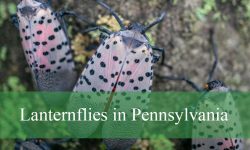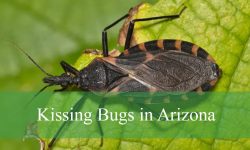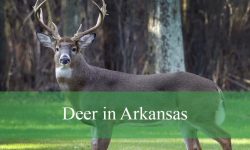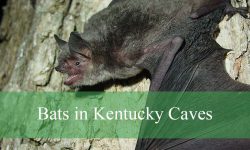Mourning doves are some of the most recognizable birds found in Tennessee’s backyards. Their soft cooing, graceful flight, and gentle nature create a sense of calm that many residents associate with early mornings and quiet evenings. Yet beneath this peaceful appearance lies a bird whose life is far more complex than most people imagine.
Tennessee’s warm climate, varied landscapes, and plentiful food sources have made the state a stronghold for mourning doves. They thrive in urban yards, agricultural edges, woodland margins, and grassy fields. People often mistake their simplicity for ordinariness without realizing how remarkable their behaviors and adaptations truly are.
This article uncovers the hidden secrets about mourning doves in Tennessee backyards. Their feeding habits, nesting strategies, survival skills, and ecological roles reveal a bird that deserves far more attention than it usually receives.
Understanding Mourning Doves in Tennessee

What Mourning Doves Really Are
Mourning doves, scientifically known as Zenaida macroura, are medium-sized birds with slender bodies, long tails, and soft gray-beige feathers. Their black wing spots and iridescent neck patch add subtle beauty to their plumage. The species is named for its distinctive call, a haunting coo that resembles a gentle lament.
These birds belong to the dove and pigeon family. They are swift fliers capable of reaching speeds exceeding forty miles per hour. Their streamlined wings allow rapid escape from predators and efficient long-distance travel.
Why They Thrive in Tennessee
Tennessee’s climate provides mild winters and abundant food that mourning doves depend on year round. Backyard feeders, agricultural harvest remnants, and natural seed-producing plants create a supportive habitat. Urban and suburban development has unintentionally benefited them by providing open lawns, utility lines, and sheltered nesting opportunities.
The state’s mixture of forest edges, farmland, and residential neighborhoods suits their preference for open or semi-open habitats.
Where They Live Around Backyards
Mourning doves perch on telephone wires, fences, rooftops, and tree branches. They often forage on the ground beneath feeders or in open lawns. Their nests appear in trees, shrubs, porch beams, and patio furniture. Their adaptability allows them to live close to people without losing their wild instincts.
Hidden Behaviors You Never Knew
Their Silent Communication
Mourning doves rely heavily on body language. A quick wing flick may signal readiness to take off. A bowed head displays mild aggression toward other doves. Their wings make a distinctive whistling sound when they launch into flight, a behavior thought to warn others of potential danger.
Their Loyalty to Territory
Although not strictly territorial, mourning doves often return to the same backyard feeding areas. Pairs explore familiar perches and resting spots daily. Once they establish a preferred location they revisit it consistently unless disturbed.
Their Gentle Social Interactions
Contrary to their shy appearance, they form loose social groups. They gather near feeders but maintain space between individuals. Their interactions are subtle which makes observers underestimate their social complexity.
The Anatomy That Sets Mourning Doves Apart
Lightweight Skeleton
Mourning doves possess hollow bones that reduce weight. This adaptation enhances flight efficiency. Their wings produce rapid beats that propel them upward with surprising speed.
Strong Breast Muscles
These muscles support extended periods of flight. Doves often travel long distances during seasonal movements. Their aerodynamic body shape reduces drag.
Specialized Crop for Feeding
A dove’s crop stores food and produces crop milk. This nutrient-rich substance feeds growing nestlings during early development. Few bird species possess this ability.
Feeding Habits in Tennessee Backyards
What They Eat
Mourning doves primarily eat seeds. Their diet includes millet, cracked corn, sunflower chips, safflower, wheat fragments, foxtail, ragweed, and pine seeds. In Tennessee they take advantage of backyard feeders filled with mixed seed blends.
Occasionally they consume small insects or gravel which aids digestion.
Ground Feeding Behavior
These birds feed almost exclusively on the ground. They walk with steady steps picking seeds one at a time. They prefer flat open areas where they can detect predators early.
Backyard feeding becomes easier for them when seed falls beneath feeders.
How They Digest Seeds
Doves swallow seeds whole. Gravel inside their gizzard helps grind food. Their efficient digestive system allows them to extract nutrients from hard seed coatings.
Why They Visit Backyards More in Winter
Winter reduces natural food availability. Fallen leaves cover ground seeds. Snow or frost limits plant access. Backyards provide reliable resources that sustain them through colder months.
The Secret Nesting Life of Mourning Doves
Simple Nest Construction
Mourning dove nests appear flimsy. They consist of loose twigs arranged haphazardly. Despite their appearance these nests function well. Doves rely on gentle placement rather than tight weaving.
They build nests in trees, shrubs, porch rafters, gutters, hanging baskets, and even unused outdoor equipment.
Fast Breeding Cycle
Doves raise multiple broods in a single year. Tennessee’s long warm season allows three to five nesting attempts. Each clutch contains two eggs. Their incubation lasts around two weeks.
Shared Parenting
Both parents incubate the eggs. The male usually handles midday shifts while females incubate morning and evening hours. This shared responsibility ensures consistent warmth.
Crop Milk Feeding
After hatching parents feed nestlings crop milk. This nutrient rich secretion resembles a soft paste. It supports rapid growth during the first days of life before seeds are introduced.
Mourning Doves and Their Impressive Survival Skills
Evasive Flight
Doves escape predators using rapid wingbeats and unpredictable flight paths. Their ability to accelerate instantly makes them difficult for hawks to catch.
Awareness of Surroundings
Doves possess wide visual fields. Their eyes detect approaching threats from multiple angles. Their caution explains their tendency to startle easily.
Use of Subtle Camouflage
Their muted brown and gray feathers blend into soil, leaf litter, and dry branches. This camouflage protects them from predators and helps them remain undetected while feeding.
Mourning Doves in Tennessee’s Seasonal Landscapes
Spring Activity
Nesting peaks during spring. Courtship displays include soft cooing, bowing, and tail fanning. Doves build or refurbish nests during this time.
Summer Abundance
Warm weather increases seed production and insect availability. Adults raise multiple broods during summer. Tennessee backyards become active feeding hubs.
Fall Movements
Some mourning doves migrate south during fall. Many Tennessee populations remain resident. They gather in small flocks before transitioning into winter survival mode.
Winter Adaptations
Resident doves rely on backyard feeders, leftover seeds from fields, and grit found along roadsides. Their ability to endure cool temperatures depends on fat reserves accumulated during fall.
The Role of Mourning Doves in Tennessee Ecosystems
Seed Dispersal
As doves forage they move seeds across landscapes. Some seeds pass through their digestive system unharmed. This supports native plant distribution.
Maintaining Insect Populations
Although mostly seed eaters, they occasionally consume small insects. Their presence helps control certain pest species.
Prey Species
Doves serve as food for hawks, owls, foxes, and snakes. Their abundance supports predator populations and maintains ecological balance.
Mourning Doves in Tennessee Backyards and Human Spaces
Backyard Bird Feeders
Doves visit feeders daily. They prefer ground trays, platform feeders, or spilled seed beneath hanging feeders. Providing millet, cracked corn, and sunflower chips attracts them.
Nesting Near Homes
Many residents find nests in hanging baskets, porches, and garage rafters. Doves tolerate human presence as long as disturbances remain minimal.
Water Sources
Birdbaths and shallow water dishes attract doves. They drink frequently and bathe to maintain feather health.
Myths and Misconceptions About Mourning Doves
Myth: Doves Are Weak Fliers
They are exceptionally strong fliers capable of long distance travel and rapid escape.
Myth: Dove Nests Fail Easily
Though flimsy, dove nests succeed because parents sit tightly and protect the eggs from wind.
Myth: Doves Mate for Life Always
Many pairs remain together for multiple seasons but not all partnerships are lifelong.
Myth: Doves Only Eat Seeds
Seeds dominate their diet but they also consume small insects and grit.
Predators and Threats in Tennessee Backyards
Hawks and Owls
Cooper’s hawks and sharp shinned hawks are major dove predators. Owls take doves during night roosting.
Domestic Cats
Outdoor cats pose significant risks. Ground feeding increases vulnerability.
Snakes and Raccoons
These animals raid nests especially when doves nest close to the ground or on human structures.
Window Collisions
Fast takeoff responses sometimes lead to collisions with glass surfaces.
How Climate Change Affects Mourning Doves
Warmer Winters
Warmer temperatures allow doves to remain in Tennessee year round. Food availability influences these patterns.
Earlier Breeding
Spring warming alters timing. Doves sometimes begin nesting earlier than in past decades.
Changes in Plant Communities
Shifted plant communities affect seed availability. Some native plants decline while others expand.
How Tennessee Residents Can Support Mourning Doves
Provide Safe Feeding Areas
Ground trays placed away from dense shrub cover reduce predator attacks.
Offer Water Sources
Clean shallow water dishes help doves stay hydrated especially in summer.
Avoid Pesticides
Reducing chemical use supports healthy ecosystems that benefit doves.
Protect Nesting Areas
If doves nest near homes avoid moving or disturbing the structure until young have fledged.
Daily Life of Mourning Doves in Tennessee Backyards
Morning Feeding
At sunrise doves gather beneath feeders or forage along lawns. Their calm presence marks the start of the day.
Afternoon Resting
Doves perch in trees or on utility lines. They conserve energy during warm hours.
Evening Activity
Late afternoon brings another feeding session. Calls become more frequent as pairs communicate subtle signals.
FAQs About Mourning Doves in Tennessee Backyards
Are mourning doves friendly
They are peaceful birds that tolerate humans but remain cautious.
What do mourning doves eat
They eat seeds such as millet, sunflower chips, cracked corn, and natural grains.
Do mourning doves migrate
Some migrate while many Tennessee birds remain year round.
How long do mourning doves live
Wild doves typically live one to five years though some survive longer.
Why do doves puff up their feathers
They trap warmth or indicate mild agitation.
How often do they nest
They may nest multiple times during the warm season.
Do mourning doves drink a lot
Yes. They require frequent water especially during hot Tennessee summers.
Are mourning doves beneficial
Yes. They disperse seeds and maintain natural balance.
Do they mate for life
Some pairs stay together long term though not all partnerships last.
Why do doves visit my yard
Food, water, and safe perches attract them.
Conclusion
Mourning doves in Tennessee backyards represent one of the state’s most gentle and enduring wildlife species. Their soft calls, elegant flight, and quietly complex behaviors create a calming presence in residential landscapes. Yet behind their simplicity lies a bird whose survival relies on intelligence, adaptability, and intricate life strategies.
Understanding their hidden secrets transforms the way people view these familiar backyard visitors. Whether perched on a fence at dawn or gliding across an evening sky, mourning doves contribute to Tennessee’s natural charm and ecological balance.
Their presence reminds residents that even the quietest creatures hold fascinating secrets waiting to be discovered.






